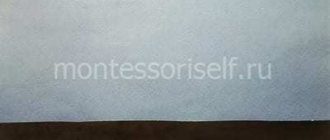The structure of writing GCD taking into account the Federal State Educational Standard
Sinarik Mkrtchyan
The structure of writing GCD taking into account the Federal State Educational Standard
The structure of writing GCD taking into account the Federal State Educational Standard
To properly organize GCD, you need to have a good understanding of some issues and identify the difference between “occupation” and “GCD”.
The distinctive features of GCD are primarily
-forms of its organization
- in changing the position of the teacher in relation to children
-updating the structure of the GCD.
Initially, you need to think about the motivation with which GCD begins.
Motivation can be different - practical, playful, educational. It should contain something that will cause interest, surprise, amazement, delight in children, in a word, then after which the children will want to do “this.”
And so the structure of GCD
Introductory part.
1) Creation of a game situation (problem situation, target setting, any motivation that stimulates children’s activity in finding a solution to it.
MAIN PART
2) designing solutions to a problem situation, performing actions. Children are given new knowledge necessary to solve a problematic issue based on the content of different sections of the program based on visualization, or children themselves obtain knowledge through research, search, and discovery.
FINAL PART,
3)Analysis of performance results, reflection. Summarizing.
Introductory part of GCD
, features of work on creating play motivation at different age stages.
Younger age
- you tell the children that something happened to some game characters, you turn to the children with a question, you agree
If they provide the required assistance, you gradually offer your children your
options for getting out of this situation...
Middle group
– you can bring a character because at this age children have already mastered roles or children take on a role and act in it. To do this, the teacher invites the children to play. Then, together with the children acting in the role, first a game task is set (we need to do something, and then a learning task (we will learn how to do it).
The older group - the main thing is not the characters, but the plots, plot structures (there is no character himself, but there is a letter, an SMS, a call). Plots can be long (travel in a time machine). During the GCD may
Use small paraphernalia, established roles, changing
Roles.
In the preparatory group
— the need to create gaming motivation remains, but problematic situations can already be added here.
A problematic situation is a planned, specially conceived means by the teacher aimed at awakening children’s interest in the topic under discussion. In other words, a problematic situation is a situation in which a child wants to solve difficult problems, but he lacks data and must look for it himself.
You can also use games with rules as motivation; children make sure the rules are followed. The game used is a competition with the goal of winning. Give every child the opportunity to visit the world
situations of winning and losing.
MAIN PART
Having outlined a task for joint implementation (children choose a goal or several goals for themselves, the adult, as an equal participant, offers all possible ways to implement it. In the process of activity itself, he gradually “sets” the developmental content, offers his idea or his result for children’s criticism; shows interest as a result of others; is included in the mutual assessment and interpretation of the actions of the participants; increases the child’s interest in the work of a peer, encourages meaningful communication, provokes mutual assessments, and discussion of emerging problems.
Do not evaluate children's answers - accept any. During the activity, V-l always asks the children “Why, why are you doing this, so that the child comprehends every step. If a child does something wrong, give him the opportunity to understand for himself: “What exactly is wrong, you can send a smarter child to help.
FINAL PART
Results and reflection, up to 5 minutes.
First of all, this part is characterized by an “open end”; Each child works at his own pace and decides for himself whether he has completed the research or work or not. An adult's assessment of children's actions can only be given indirectly, as a comparison of the result with the child's goal: that is, what he wanted to do - what happened.
Don’t ask your children: did you like it or not? We need to ask “why did you do this? To understand whether the child has realized the goal. Or “Why did you need this? “Could you ever need this?”
Find someone to praise for something, not only for the result, but also for the activity in the process of work. The assessment must be differentiated.
When organizing educational activities, the professional position of the teacher is to respect any statement of the child regarding the content of the topic under discussion. We need to think in advance about how to discuss children’s versions, not in a harsh, evaluative form
Map of analysis and observation of GCD productive activities in different age groups
Map of analysis and observation of GCD productive activities in different age groups
Analysis of the OD organization - modeling
| age group (multi-age) | 2 younger | older |
| teacher | Sheredkina O.S. | Sheredkina O.S. |
| subject | "Flower for Mom" | "Vase with a flower" |
| Questions | Value-analytical judgments | |
| Identify and formulate the tasks to be solved in the lesson. | Develop the ability to create objects consisting of 2-3 parts, connecting them by pressing them against each other. To develop children’s ability to convey the features of a flower (stem, leaves, petal). Offer to combine sculpted figures into a collective composition. To develop the ability to sculpt objects in a constructive way. Use plasticine carefully, placing lumps and molded objects on the board. | Strengthen the ability to sculpt objects using sculptural and combined methods. Develop the ability to smooth the surface of a form and make objects stable. Continue to develop the ability to sculpt small parts; using the stack (veins of leaves, patterns on a vase, etc.) Strengthen your neat sculpting skills. |
| Determine the duration of the lesson as a whole and each part. | Lesson duration 15 minutes. Part 1 – preparatory (3-4 minutes), Part 2 – main (8-9 minutes), Part 3 – final (3 minutes). | Lesson duration 25 minutes. Part 1 – preparatory (5 minutes), part 2 – main (15 minutes), part 3 – final (5 minutes). |
| Assess the quality of the visualization, its location and appropriateness of use. | All materials provided and used in the lesson had a bright, aesthetic appearance. They were located at the children's eye level. The teacher used a visual method so that each child could see. | All materials provided and used in the lesson had a bright, aesthetic appearance. They were located at the children's eye level. The teacher used a visual method so that each child could see. |
| List the techniques used by the teacher in the classroom, evaluate the methodological competence of their use. | Artistic expression, examination of a sample, demonstration and explanation, game techniques, analysis of children's work. | Artistic word, teacher's example, explanation, demonstration, questions, individual and group answers, analysis of children's work. |
| Highlight and list the gaming techniques used in the lesson. | Game techniques: “flowers in the meadow”, “butterflies and flowers”. | Game techniques: “flower - seven flowers”, “bees collect nectar”. |
| Determine the level of development of children’s technical skills to work with material. | The level of technical skills when working with plasticine is average. Not all children were able to press the parts together correctly, as a result of which the composition fell apart. | The level of formation is high. Children are good at using this material (plasticine), smoothing, smearing, using a stack, etc. |
| Assess the relationship between the teacher and children, between children. | The relationship between the teacher and children throughout the lesson is positive. The teacher tried to pay attention to each child (she helped, if necessary, suggested). There were no conflict situations between the children. | During the lesson, the children consulted with the teacher and showed initiative in creativity. If a child made an interesting pattern, the teacher drew the attention of all children to this. The guys helped each other if someone didn’t succeed or didn’t have time. There were also no conflict situations between the children. |
| Identify and name integrative areas. | “Cognitive development”, “physical development”, “speech development”, “social and communicative development”. | “Cognitive development”, “physical development”, “speech development”. “Social and communicative development” |
| Lesson rating (from 1 to 5 points) | 3 | 4 |
| Your suggestions for organizing and conducting classes. | A surprise moment at the beginning of the lesson and rewards at the end of the lesson (in the form of sweet prizes or mini gifts). | A surprise moment or a problematic situation (to motivate children emotionally). |
Conclusions:
in the second younger group, the analysis of children's work was carried out by the teacher, aimed at the overall result, and attention was focused on the aesthetics of the work performed.
In the older group, examining images created by children and their own assessment is of particular importance. Unfortunately, not all older children were able to convey the correct proportions. But in general, this lesson showed that the success of learning and developing modeling skills in children is largely due to the creation of playful moments in it (after all, play is the leading activity). The use of a system of gaming techniques was carried out taking into account a number of factors: the nature, place and role of gaming manifestations in children's fine art, age and individual characteristics. Playful teaching methods increased the activity and initiative of children, their response to the images created in modeling, formed the ability to feel and determine their expressiveness, and aroused a desire to improve the image and correct inaccuracies.
Analysis of OA organization - drawing
| Educator | Rogacheva O.E. |
| Age group | average |
| Subject | |
| Questions | Value-analytical judgments |
| Compliance of the content of the lesson with the program of a given age group, time of year, and children’s visual abilities | This activity fully corresponds to the age characteristics of children, the time of year and visual skills. |
| A combination of new and familiar to children | During this lesson, the teacher used game techniques, added new shades of colors familiar to the children, and showed how to mix them to get the desired color. |
| Correctness and accessibility of the teacher’s explanations, ability to demonstrate work techniques | The teacher showed the working techniques step by step, used an outlining gesture, accompanying it with a verbal explanation (the correct location of the drawing on a sheet of paper, the correct position of the brush in the hand, a sample of her drawing). Illustrations for example were accessible, understandable to children and located at the children's eye level. |
| Duration of the lesson by stages and in general, reasons for the delay, if any | The lesson lasted 20 minutes, parts 1, 2 and 3 were distributed correctly. More attention was paid to the practical part, but, unfortunately, not all children managed to finish on time, due to individual characteristics. |
| Children’s behavior in class: organization, discipline, independence, interest, their sense of time, pace of work | Since the teacher introduced a playful technique into the lesson, the children were interested and disciplined. The pace of work was from moderate to slow. |
| General assessment of the lesson, positive aspects and disadvantages, what changes would be advisable to make to the methodology of this lesson | The lesson was interesting and well designed. A surprise moment, a playful technique, the children found it interesting and educational. I don't see the need to make changes to this activity. |
Conclusions:
Children of this age group have well-developed visual skills, but a poorly developed sense of time, so not everyone managed to finish on time. But overall the lesson was very interesting, educational, and new elements were added. Throughout the entire lesson, the teacher maintained the children’s interest, encouraged them, and encouraged them.
Analysis of OD organization – application
| Educator | Kopkova Yu.D. |
| Age group | preparatory |
| Subject | "tea-set" |
| Questions | Value-analytical judgments |
| Compliance of the content of the lesson with the program of a given age group, time of year, and children’s visual abilities | The lesson reflects all the assigned tasks; they correspond to the age of the children and their visual skills. The theme of the lesson may well correspond to any time of year. |
| A combination of new and familiar to children | What was new was contour (silhouette) cutting of an object with a more complex texture; children were familiar with less complex ones (vegetables, fruits). |
| The role of the attendants in preparing the lesson, the combination of the work of the attendants with self-service | Help in preparing for the lesson (distributing mats, scissors, glue, brushes, etc.) to each child, including yourself. After class, help in cleaning tables and washing brushes. |
| Correctness and accessibility of the teacher’s explanations, ability to demonstrate work techniques | Along with visual techniques, the teacher used precise verbal instructions and tasks to independently determine in what way and in what sequence the work should be done. I used the silhouette cutting method, tracing the outline of the object, starting from the part of the object from which to start cutting. |
| Duration of the lesson by stages and in general, reasons for the delay, if any | Lesson duration 30 minutes. Stage 1 - preparatory (organizational moment - 6 minutes), Stage 2 - main (practical part - 15 - 18 minutes), Stage 3 - final (analysis of works, exhibition - 6-7 minutes). |
| Children’s behavior in class: organization, discipline, independence, interest, their sense of time, pace of work | The children worked at a moderate pace, were interested and disciplined. Some showed creative independence in that they wanted to come up with “their own pattern.” But some still needed the help of a teacher. |
| General assessment of the lesson, positive aspects and disadvantages, what changes would be advisable to make to the methodology of this lesson | Overall the lesson went well, the children were interested and positive. The teacher competently distributed the structural parts of the classes (motivation, finger gymnastics, analysis of work). I think that changes in this lesson are unnecessary. |
Conclusions:
summing up the results of this lesson, I concluded that the level of development of visual skills among the majority of the children is high, but 2-3 children have an average level, this is most likely due to the individual characteristics of the children, and not the level of their training and practical skills .
Differences between a technological map and a synopsis
The new Federal State Educational Standards impose special requirements on the modern lesson aimed at increasing its effectiveness.
The lesson should be problematic and developmental in nature, contribute to the formation of personal and subject competencies, learning skills. Also, in the process of introducing the Federal State Educational Standard, the teacher needs to focus on the achievement by schoolchildren of three groups of planned educational results, which should be formulated not in the form of a list of traditional knowledge, skills and abilities, but in the form of formed methods of activity. These requirements should be reflected in the description of the lesson.
The technological map of a lesson according to the Federal State Educational Standard is in the form of a table. However, this is not the only difference from the traditional outline. There are many more of them and they relate to the information content of each of these forms.
Let us give their comparative characteristics (see below).
Thus, recording the progress of a lesson in the form of a technological map gives the teacher the opportunity, even at the stage of preparation for it, to maximally detail its content and effectively reflect the main points of the work program that correspond to the topic of the lesson. Allows you to evaluate the rationality and potential effectiveness of the selected content, forms, methods, means and types of educational activities at each stage of the lesson.
| Technological map of the lesson according to the Federal State Educational Standard | Lesson summary |
| Allows you to demonstrate a system-activity approach during the lesson, since it contains a description of the activities of all participants in the educational process when performing each action, and indicates the nature of the interaction between the teacher and students. | It has the form of a script, which mainly includes a description of the words and actions of the teacher. |
| Includes a description of the students’ activities with an indication of the UUDs formed in the process of each educational action. | Contains an indication and description of the basic forms and methods used in the lesson. |
| Helps to understand the planned results of each type of activity and control this process. | Only the general goals of the entire lesson are indicated. |


